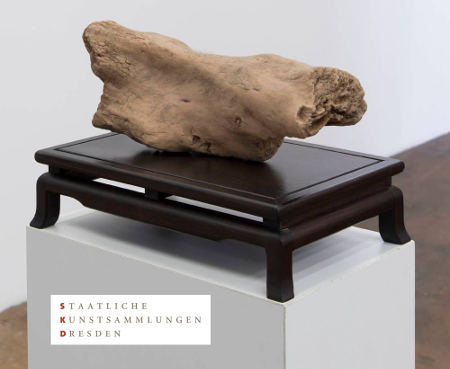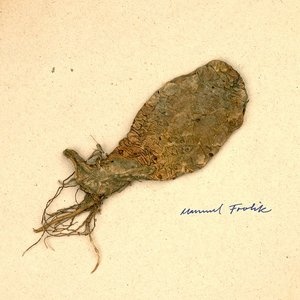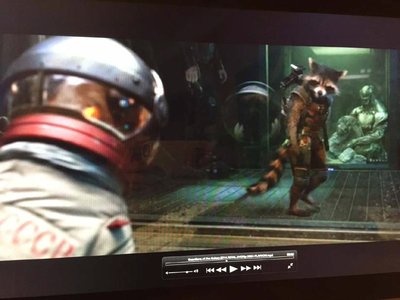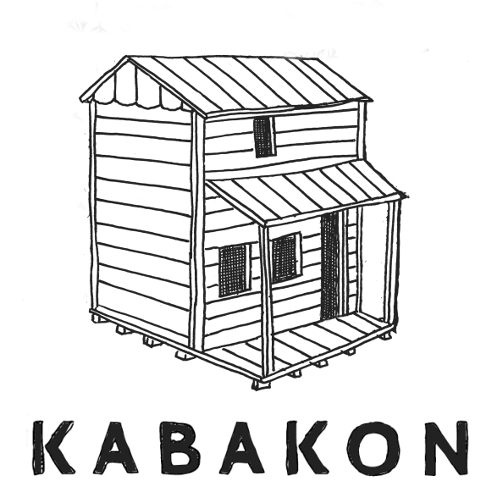<<
A game of truth and deception -
New photo and video works by Manuel Frolik at Städtische Galerie Dresden.
Who would not like to pose with the great Joseph Beuys on a photo? Unfortunately, he already died in 1986. But that doesn´t prevent Manuel Frolik from presenting himself on a Polaroid with Beuys. It is not the only picture in Froliks exhibition “Infinite Quest“ at Städtische Galerie Dresden, that shows him with some great artist. Also singer and poet Nick Cave gives his youthful face to the artists camera.
May all art should be fraud at the end? Or may it even be megalomania? After all, Cave and Beuys belong to the most influential artists of their metier. Obviously this is a game about truth and possibilities. It deals with artistic strategies of self-staging and the construction of tradition-lines of masters and students: standing in the shadow and rising above ones idols, even this is in these pictures. As well as the 15 minutes of fame for everyone.
On a deeper meaning these faked photographs say something about our picture-hungry world, in which the picture always tells the truth (or at least claims it). Even Stalin already knew that no picture is forgery-proof, that it can be processed and manipulated; as he whipped Trotzki out of history afterwards. With nowadays possibilities of picture editing even moving pictures can be faked astonishingly easily. Welcome to the brave new world of fake-pictures! In addition to this, the faked presence of Beuys is virtually harmless.
For Manuel Frolik, born 1979, the examination of fake and original is a recurring element of his work: whether if it is the faithful adaption of an image or even with the help of faked images, the key question is the one for authenticity. Because art is always a challenge with quotations and adoptions of the old masters, it is necessary to question the authenticity delusion – repetition and variation – actually the history of art has to be considered in this terms.
Frolik, who studied at the Academy of Fine Arts in Dresden, also refers back to elements of the naive children’s play in his work. At the same time he demystifies our ideas of childhood in his video „Tribe of Yola“, which is the centre of the exhibition. The scenery of the film seems to be dystopian. Some kids go for an adventurous and dangerous trip through some kind of a “no man’s land“. If they are really just playing…? Childhood is also present in Froliks sculptures: almost spooky are the kids-sculptures made from silicon rubber. Everything, until the hair on their heads, is imitated faithfully.
In a mixture of hyper realistic reproductions on the one hand and the use of found materials on the other, the question for the appropriation of reality by the artist always arises. As a viewer one smiles in the face of the game of truth and deception. In the best sense of the word, Manuel Frolik is an entertainer.
Marlen Hobrack, in DRESDNER Kulturmagazin 02 / 2019
<<
from the programme of the 32. Kassel Dokfest, November 2015
Dresden 2014 / video projector, HD player, amplifier, 2 speakers, subwoofer, object (37 min.)
This hiking tour seems to have no end and yet the hiker presents himself with a steady flow of power
in his forward thrust, which leads him through this forest, through green meadows, along river courses
or through swamps with dead branches and over rough rocks. He remains to pursue his path with
determination. Neither effort nor hardship can be sensed, nor an optimistic mood or fatigue. This is
why we – while following him cinematically – cannot predict how long he has been en route, let alone
how long he will be able or willing to continue this way. After some time, one notices that the
landscapes begin to repeat themselves and one begins to suspect that the hiker is moving in circles.
And indeed, this work is an experiment with the video loop as a cinematic structure. What seems like a
repetition is a sequence of singular films, which have been shot at the same location but are cut
together from different sources of film material. The consequence of scenes and therefore the
landscapes of the seven five-minute films are the same, the shots and details vary. The question
arises, how long we would we watch a film before noticing that the replay actually is not a replay and
what it means when – after seven films – the actual repetition starts; when the film is really looped in
its presentation as an installation.
The hiker himself and his presence seem to fall a bit out of time. A vest and a striped shirt, a backpack
and a wandering stick are far from today’s functional wear and so he seems much more like a
contemporary of Caspar David Friedrich than of our days. Therein lies a desired image, which has
existed for a long time in our culture. The longing for a simple life in harmony with nature already
existed in antiquity in the imagination of a rural Arcadia. Other examples are the idea of the great hike
in Johann Gottfried Seume’s book “Spaziergang nach Syrakus” (“Walk to Syracuse”, 1803) or the
imagination of a retreat to the woodlands in Henry David Thoreau`s cult book “Walden” (1854). All of
these images are also images of masculinity; blue prints, which today are interchangeable and
available as one identity among many. In his work Manuel Frolik stages such spaces and images,
myths of male freedom and self-determination; for example as a sailor, as a mechanic or as the cool
friend of Dash Snow or Kurt Cobain. But this does not happen without ironic distance: his sailor is a
corpse, and Dash Snow as well as Kurt Cobain are also already dead, therefore “cool” per se.
The hiker undertakes his hike as a projection in a forest worker’s hut. The image appears as a kind of
slide picturing longings, like a photo-wallpaper presses the dream of a far away world onto the
domestic walls. Frolik adds objects to this room, which make it seem like a life-size doll house or like
rooms of the past frozen into big dioramas, which one can come across in local history museums.
Holger Birkholz
<<
SPFX, or: Nature after Nature.
Opinion statement regarding Manuel Frolik’s silicone studies by Prof. Dr. Dietmar Rübel, Chair of Art History Academy of Fine Arts Munich, 2018.
Two years ago, Manuel Frolik completed a series of seven silicone sculptures shaped like chunks of wood and roots. The intricate studies are presented on dark wooden bases with curved legs, whereby at first glance the artefacts seem like bonsai trees or particularly opulent cacti.
Yet viewers are quickly filled with astonishment and react with a shudder. For on closer inspection it becomes clear that human and animal hair protrudes from these plant- and wood-shaped forms, and the objects’ peculiar shades of colour have the appearance of unhealthy skin tones, or evoke an incarnation of something deathly ill or no longer human. What grips viewers emanates from the special effects, or SPFX for short, which permeate the sculptures, making the impossible – such as person-wood-animal-hybrids – possible, while simultaneously revealing and reflecting upon the underlying methods of the artistic practice. The sculptures seem like found objects from a former film set: ‘As-If objects’ that come from horror or science fiction films and radiate the distinct characteristics of creepiness. And the artist does indeed use the materials and techniques of make-up artists, or works closely with them. Using expensive materials and laborious craftsmanship, the seemingly natural horrors emerge in irritating realism – even though these absurdities are completely artificially produced.
In this work, Manuel Frolik examines spellbinding questions around aesthetics and the materiality of the (post-)modern, and particularly around the present debates about ‘nature after nature’ and ‘Dark Ecology’. Indeed, the effect of his two materials – hair and rubber – is closely linked to debates that began around the year 1800 about the materiality of the arts. The real hair he implants into the silicon forms brings to mind one of the foundational texts of modern sculpture: Johann Gottfried Herder’s 1778 book Plastik: Einige Wahrnehmungen über Form und Gestalt aus Pygmalions bildendem Traume (Sculpture: Some observations on shape and form from Pygmalion’s creative dream), and the passage which describes the aesthetic horror – or from today’s point of view ‘the subversive potential’ – which the poet experienced from seeing hair on sculptures. There it states: “The little individual hairs send shudders through us. Like a chip out of a knife blade, they are just something that impairs the form, and that does not belong there”. This also indicates the extent to which modern art is tied to its materials, and how experimentation with new materials and substances has emancipated itself from form – to which Herder believed materiality did not ‘belong’.
A special place in the history and theory of the arts, in addition to cast iron and steel, is held by rubber. In everyday speech, rubber refers to a heterogeneous group of natural and man-made materials resembling India rubber, and which can be moulded, pressed, cut, bonded, sewn or foam-formed. Thereby it remains very flexible and thus, when touched or lightly shaken, Manuel Frolik’s sculptures begin to vibrate and wobble in an eerie fashion. Due to the flexibility of natural rubber, there are applications for it in almost every area of our daily lives. Natural rubber manufactured from latex – the milky sap of various tropical plants – was employed in Africa and in Central- and South America as early as two thousand years ago. Unstable raw rubber reached Europe around 1750, but it was not until the mid-nineteenth century that it could be made more durable through vulcanisation, making this elastic, pliable material suitable for industrial production.
After 1909, rubber was also produced synthetically. Silicone rubber has been available for use since 1945. Its molecular chain is no longer made of carbon, but of alternating silicone and oxygen atoms instead. This astounding material is the main component of the silicone series of works, and even today its aesthetic effect is baffling – certainly comparable to early descriptions that came out of the first Great Exhibition of 1851 in London. As Gottfried Semper noted in 1860, in the first volume of his principle theoretical work Der Stil in den technischen und tektonischen Künsten oder praktische Ästhetik (Style in the technical and tectonic arts; or, Practical aesthetics): “Only recently has an important natural material brought forth a type of revolution in the most diverse fields of industry, and this is due to its remarkable malleability, with which it yields and lends itself to all purposes. I speak of gummi elasticum, or caoutchouc (...) the stylistic range of which is the broadest imaginable, since its almost unlimited sphere of application is that of imitation. This material is, as it were, the mimic among useful materials”.
The giddiness caused by this versatile material and its endless possibilities led to rubber being used in arts and crafts during the ‘long nineteenth century’ to imitate other natural materials.
And this quality also comes to the fore in Manuel Frolik’s series when he produces deceptively real replicas of chunks of wood and roots that he collected earlier on long hikes. These surrogates are thus based on actual natural forms from which the artist makes laborious moulds, then producing casts which he paints with an airbrush. Besides the specific material properties which the artist uses extremely skilfully, the final stage – the coloured version of the work – adds another dimension, and one which has been in particular demand when working with rubber in twentieth century fine art. The fact that synthetic latex milk or silicon rubber constitutes an amorphous material with skin-like qualities makes it particularly suitable for depicting alternate concepts of corporeality due to its mimetic malleability.
In their body-related art, many artists – from Marcel Duchamp and Louise Bourgeois through Eva Hesse and Hannah Wilke to Matthew Barney and Nathaniel Mellors – make use of the notion that slumbers in rubber of a corporeality with no clear boundaries. In Manual Frolik’s work this anthropomorphic materiality gives rise to hybrid creatures, in which the human body has almost completely united with animal and vegetable components. Only the individual hairs sprouting on the flesh-coloured found objects of his silicone series evoke human figures in these absurd forms – although in fact only two of the sculptures feature real human hair: the rest is from
animals. We are seeing the last traces or phases of a mutation in a post-human world, and they can also appear as thing-forms or organic vestiges. Manual Frolik leaves the endeavour of humanity behind as a hairy problem.
In all of this, something is created that may constitute a speculative romanticism – but it is logically executed as Nature after Nature. For it is clear that the series of silicone sculptures is also about departing from the romantic concept of nature that has characterised European aesthetics since around the year 1800.
In precisely the spirit of theoreticians such as Timothy Morton or Bruno Latour, everything that surrounds living creatures is understood as nature here – whether that be synthetic materials, everyday objects or complex machines. In visualising a so-called “Dark Ecology”, the world should be viewed from a non-human perspective, thus also from the viewpoint of animals or plants – which could account for the sculptures’ uncanny allure.
However, there is no “back to nature” in these theories – and this is the greatest horror that Manuel Frolik’s sculptures elicit.
For there is no more ‘nature’. Finished. Gone. It is a matter of no longer understanding that which was once nature as the antithesis of culture, and instead seeing the achievements of humanity, but also of animals and plants, as a part of today’s environment – as a complex network of hybrids.
Thus, Manuel Frolik’s series is initially bewildering because of its eerie materiality and its manifestation as human-wood-animal hybrids. With its speculative romanticism based on special effects but also on an initial orientation on inevitability, it possibly offers a rethinking of Nature after Nature
<<
Phytophilia Dresdense, 2017
from: remembering the future, exhibition catalog
Manuel Frolik´s process-based work is known for its artistically appropriation and alienation of ´found footage´ or detailed reproductions of hyper realistic or amorphous sculptural figures and objects. He questions authenticity and authorship and plays with our ideas of fake and original.
For “remembering the future“ Frolik worked together with the collection Herbarium Dresdense and the Botanical Garden of the Technical University of Dresden. About dealing with the typological appearance of herbarium vouchers, some of which go back to the 18th century, Frolik made scans of new plant material from the Botanical Garden, that recur on the historical evidence, and have an independent pictorial transformation of the material.
Gwendolin Kremer, 2017
Jessica Buskirk:
Interview with Manuel Frolik
Jessica Buskirk: How would you describe your work for
Remembering the Future?
Manuel Frolik: It’s a photographic work inspired by
Herbarium Dresdense, focusing on exotic plants from the Botanical Garden
in Dresden. Originally I had a different idea. I was in the hebarium looking for material for sculptural works, but I decided to
work on a photographic project because I was so interested in the way that botanists handle their plant material.
Jessica Buskirk: Can you be more specific? What’s remarkable about their approach?
Manuel Frolik: I don’t think the botanists are even aware of it, since it’s part of their daily work, and they’re used to it. But for
me as an outsider it was interesting to see even just how the plants in the herbarium are displayed and how people interact with
them. Since the plants for the herbarium are dried, their shape is drastically different compared to their original appearance or
living plants. For botanists, certain characteristics of the plants are significant and have to be presented in the herbarium. The
plants are dried, they’re dead, their stems and stalks are severely bent if they’re too long, etc. That was actually the first thing I
noticed in the herbarium. I asked the scientists about the reasons for this and the resulting changes. They said they are so
aggressive in order to make it clear that it is a human intervention. That means a plant is severely bent so that it is obvious that
it didn’t grow that way, but rather was “brutally” forced into this unnatural shape. It
should look as if a human has had a hand in
its shape for the display.
Jessica Buskirk: It surprised you because it is so unaesthetic?
Manuel Frolik: I wouldn’t say unaesthetic. It has a totally different aesthetic quality. That’s what interests me.
Jessica Buskirk: You’ve described how the botanists’ approach inspired your work. Do you see your photography as a
continuation of that or more as a counterpoint to it?
Manuel Frolik: No, I’m really trying to do exactly what I saw the botanists do. The difference between my work and the images
in historic herbariums, some of which are 200 years old, is that I try to leave out the visible historic traces. That means I don’t
use yellowed paper, old handwriting, etc., which play a big part in the experience when we view an old herbarium today. I’m
going to use high-resolution scans under an acrylic sheet so that the presentation has a cooler feeling and a high-tech look. I try
to exclude the historic aspects and concentrate on how the plants are presented in this format. That’s why it’s so important to
me to start with the actual processes used in herbariums.
Jessica Buskirk: Which has impressed you the most?
Manuel Frolik: I was looking for peculiarities. I looked at a total of 1000 sheets or more in the herbarium. I found two of them
simply breathtaking. These two displays really opened up a new viewing experience for me. The others were more within the
realm of the familiar, the expected. And so I try to hone in on these special cases in my work.
Jessica Buskirk: Can you speak a little more about the scanning process, its concrete steps and how your pictures will look in the
end?
Manuel Frolik: It was lucky that there was a good scanner on site at the herbarium. I had already had the idea of scanning the
displays beforehand. With scanning you can get a certain depth of focus. That’s why a scan always looks cleaner overall than a
photograph, which is sharper in the middle than at the edges. There are now scanning processes that make a larger depth of
focus possible, allowing for a depth of focus of about 2 centimeters, so that the parts of the plant that don’t lie flat are still
reproduced well.
Jessica Buskirk: Is the process more important than the product for you, or is that totally not the case? You’re working now in
the herbarium, but as an artist...?
Manuel Frolik: For me the main thing is how the ideas materialize. That means the photographs that end up hanging on the wall
are the focus. Of course, how they were created plays a significant role, but the resulting work is what’s important.

“You don’t play with your food”
A sculpting workshop in English language about food and art by Manuel Frolik for
EU4ART - Alliance for Common Fine Arts Curriculum.
01 - 12 Nov. 2021, Dresden University of Fine Arts
www.eu4art.eu

"Embracing Nature"
17 Sept. - 10 Nov. 2021
Online screening, accompanying the 2nd Children`s Biennale of the Dresden State Art Collections, with works by Khvay Samnang, Manuel Frolik and Olafur Eliasson.
https://voices.skd.museum/on-screen/

Solo exhibition as part of Rohkunstbau26:
Manuel Frolik’s Tribe of Yola
Video/Installation
opening: 19. June 2021, 3 pm
exhibition: 19. June - 05. Sept. 2021
Galerie in der Darre, Schloßhof 3, 15868 Lieberose/Germany
https://www.rohkunstbau.net/ausstellung-darre-2021

substitute professorship at Dresden University of Fine Arts
For summer semester 2021, Manuel Frolik will take over the special-class for three-dimensional design (formerly Prof. Martin Honert) as part of a substitute professorship at the Dresden University of Fine Arts.
http://www.hfbk-dresden.de/klasse_frolik/

3rd Prize at PORTRAITS - Hellerau Phoptography Award 2021
The series “Polaroids” and “Daguerreotypes” received 3rd Prize at PORTRAITS - Hellerau Phoptography Awards 2021.
The online award ceremony will take place on Saturday, April 17, 2021 at 3 p.m. and will be streamed here:
https://youtu.be/yDxhY0q3Cjw
The opening date for the annual exhibition in the Technical Collections Dresden is tied to the reopening of the museum and will be announced as soon as possible
Technische Sammlungen Dresden, Junghansstraße 1-3, 01277 Dresden

nomination: 8. Merck Prize at the 11. Darmstadt Photography Days
The series of „Polaroids“ is nominated for the »8. Merck Prize at the 11. Darmstadt Photography Days«.
opening and award ceremony: Oct. 23, 2020
exhibition: 23 Oct. – 01 Nov. 2020
Designhaus Darmstadt, Eugen-Bracht-Weg 6, 64287 Darmstadt/Germany
dtdf.de/festival-merck-preis-2
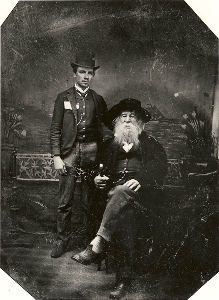
Manuel Frolik: Moritaten und Legenden
Opening: 23. September 2020
Marcolini Palais Dresden, Friedrichstraße 41, 01067 Dresden

face look
with works by
Martin Assig / Akos Birkas / Christian Brandl / Otto Dix / Kurt Günther / York der Knoefel / Marcel Dzama /
Martin Eder / Manuel Frolik / Falk Gernegroß / Jana Gunstheimer / Simone Haack / Gustavo Lacerda / Uwe Kowski
/ Gerda Lepke / Nicola Samori / Fumie Sasabuchi / Stefanie Schneider / Kristina Schuldt / Rosi Steinbach
/ Caro Suerkemper / Mari Sunna / Santeri Tuori / Sebastian Wells / Lars Wild
opening: 30 July 2020, 7 pm
exhibition: 01 Aug - 12 Sept 2020
Kunstverein Gera e.V., Markt 8/9, 07545 Gera, Germany
www.kunstverein-gera.de/ausstellungen/aktuell/face-look/

unfortunately canceled:
travel grant for Thessaloniki
Manuel Frolik receives this years travel grant by the state capital of Dresden for
a residence at the Aristotle University of Thessaloniki/Greece.
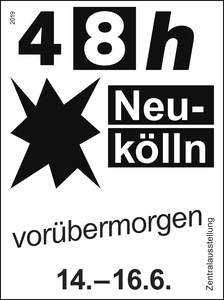
vorübermorgen
main exhibition at 48 hours Neukölln
opening: 14 June 2019, 7 pm
open: 15 June 2019, 12 pm - 01 am , 16 Juni 2019, 12 pm - 19 pm
KINDL - Zentrum für zeitgenössische Kunst
Am Sudhaus 3, 12053 Berlin
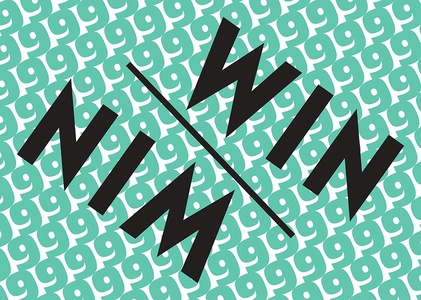
WIN / WIN 9
The purchases of the Cultural Foundation of the Free State of Saxony in 2019.
opening: 29 May 2019, 7 pm
exhibition: 30 May - 23 June 2019
HALLE 14 - Zentrum für zeitgenössische Kunst
Leipziger Baumwollspinnerei, Spinnereistraße 7, 04179 Leipzig, Germany
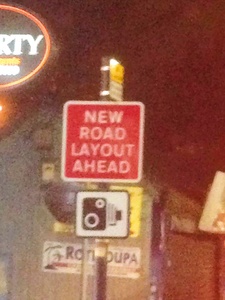
First show at THE KABAKON ART HOUSE in 2019!
Frank Zitzmann: NEW ROAD LAYOUT AHEAD
opening: 26 April 2019 7 pm, live: Dresdner KNADENCHOR
opening hours: 27 and 28 April, 2 - 8 pm
The Kabakon Art House is a project by Manuel Frolik.
The summer programm of 2019 with the artists Frank Zitzmann, Melanie Börner, Nadja Kurz und Susanne
Hopmann is supported by the Cultural Foundation of the Free State of Saxony.
www.kabakon-art.de
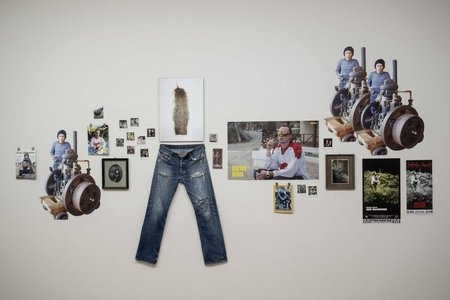
An artist talk for the DCA-gallery-weekend! - Johannes Schmidt in conversation with Manuel Frolik.
Saturday, 19 Jan 2019, 4 – 5 pm
Städtische Galerie Dresden, Wilsdruffer Strasse 2, 01067 Dresden, Germany
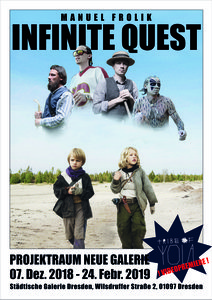
Infinite Quest
opening: 06 Dec 2018, 7 pm
exhibition: 07 Dec 2018 - 24. Feb 2019
Städtische Galerie Dresden, Wilsdruffer Straße 2, 01067 Dresden, Germany
https://www.galerie-dresden.de/
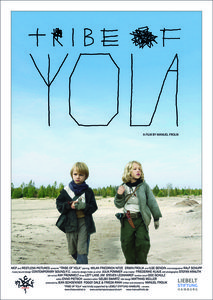
Tribe of Yola - Video - Preview
05 Dec 2018, 06:30 pm, Free entrance!
Thalia cinema, Görlitzer Straße 6, 01099 Dresden, Germany
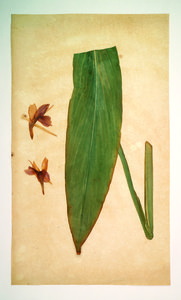
Jewels
opening: 21 Nov 2018, 7 – 11 pm
at the opening: Bar de Amanhã, nomadic bar from Rio de Janeiro, Oliver Bulas
open: Tue - Thu: 12 – 07 pm, and by appointment
Drawing Room, Hofweg 6, 22085 Hamburg, Germany
www.drawingroom-hamburg.de
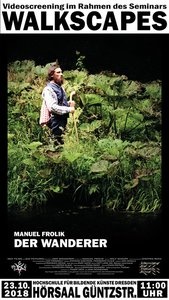
WALKSCAPES
Tue, 23 Oct 2018, 11 am
Dresden Academy of Fine Arts, Güntzstr. 34, 01069 Dresden, Germany
At the seminar "WALKSCAPES" Prof. Olaf Lauströer will show my video "DER WANDERER" (2014) in full
length at lecture hall Güntzstrasse, Dresden Academy of Fine Arts.
I will be present and everyone is warmly invited to join us.

The Kabakon Art House presents: The Show for Lindenow 14!
DIE IRREN
Theo Huber, Nicolás Dupont, Andreas Schliebenow
opening: Friday, 5 Oct 2018, 7 pm
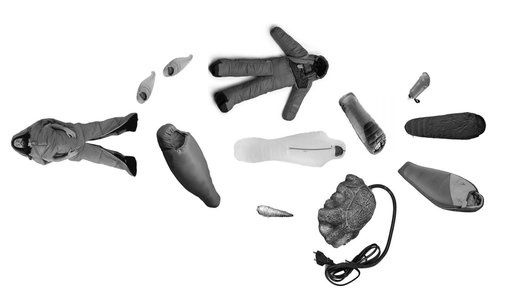
Reisegruppe Sandrock – ein Schlafzimmer geht auf Reisen.
opening: 04. Oct 2018, 7 pm
exhibition: 05.10.2018 - 07.10.2018
C. Rockefeller Center for the Contemporary Arts, Rudolf-Leonhard-Straße 54, 01097 Dresden
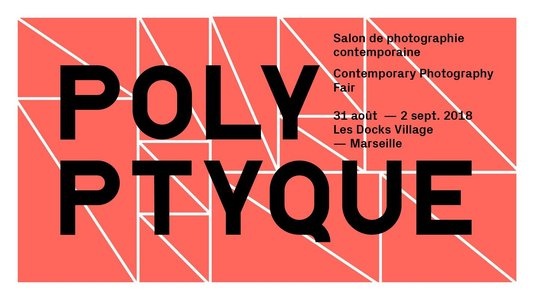
Drawing Room Hamburg presents:
Manuel Frolik / Maya Schweizer
31.8. - 2.9.2018
Polyptyque 2018 / Centre Photographique Marseille
Contemporary Photography Fair / Salon de photographie contemporaine
Les Docks Village, Place de la Joliette, 13002 Marseille, France
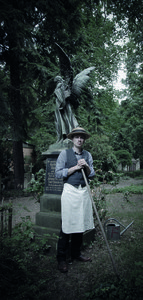
Manuel Frolik – The eternal gardener
opening: 08. July 2018, 2 - 6 pm
VORHAUS, c/o Wolf-Lauströer, Pilnitzer Landstrasse 78, 01326 Dresden, Germany
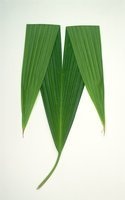
remembering the future
A exhibition project by Dresden University of Technology in cooperation with Gallery Ursula Walter.
Opening: 14 Sept 2017, 8 pm
exhibition: 15 Sept - 22 Oct 2017
Élise Alloin, Guillaume Barth, Björn Braun, Manuel Frolik, Moritz Simon Geist, Roland Görgen, Bertram Haude,
Olaf Holzapfel, Jens Klein, Amelie Marei Löllmann, Johannes Makolies, Matt McClune, Christoph Rodde,
Cindy Schmiedichen, Su-Ran Sichling, Karen Weinert, Barbara Wille
Galerie Ursula Walter, Neustädter Markt 10, 01097 Dresden
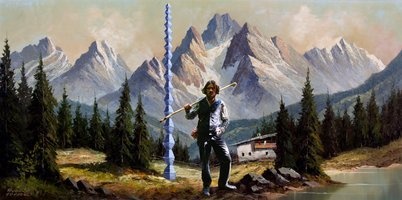
M I M E S I S
A exhibition with works by Thilo Droste and Manuel Frolik .
opening: Friday 0 Sept 2017, 7 pm
exhibition: 02 - 23 Sept 2017
Galerie Axel Obiger, Brunnenstraße 29, 10119 Berlin
www.axelobiger.net
www.thilodroste.de
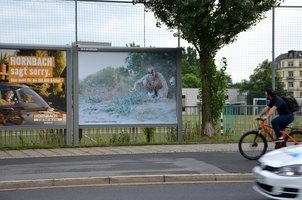
DISPLA(Y)CED
Contemporary art on billboards in the public space of the town of Dresden. Curated by Lucie Freynhagen/Alte Feuerwache Loschwitz.
8 - 18 August 2017
13 Aug 2017, 3 – 5 pm:
Moderated tour by city bus to the single positions of the exhibition in the town of Dresden with Lucie Freynhagen und Svenja Wichmann.
find online-map here:
feuerwache-loschwitz.de/2017/08/01/displayced-map-karte/
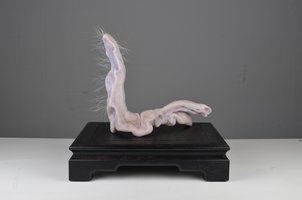
Falk Töpfer´s asking: Manuel Frolik
artist talk: Falk Töpfer in conversation with Manuel Frolik
thuesday, 6 July 2017, 22:22 pm
DAS KAPiTAL, Karl-Marx-Platz 18, 12043 Berlin
www.facebook.com/events/1592452530795607

DER WANDER at Infra Studio France
Until the 31th of March: Enjoy the free stream of DER WANDERER at Infra Studio/France!
En attendant le printemps, Avant-première vous propose une balade aussi étrange qu`hypnotique en compagnie du flâneur du dernier film de Manuel Frolik.
Der Wanderer est visible en ligne du 01 au 31 mars, avec le mot de passe: endlesspath. Bon visionnage!
www.infra-infra.fr/avant-premiere
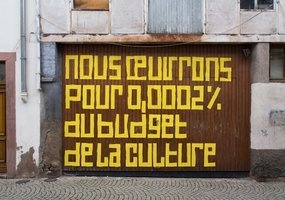
« Paper Tigers Collection & Co. »
Exposition collective du 9 au 25 février 2017
Inauguration le 9 février 2017 à 18h + concert de Todasana (VE) de 20h
Présentation de la collection à le 18 février à 18h
Syndicat Potentiel, 13 rue des Couples, Strasbourg (FR)
www.papertigerscollection.com
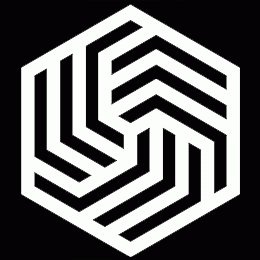
MENSCHTIERWIR
A group show curated by Elmar Lause.
opening: 07 Sept 2016, 7 pm
exhibition: 07 Sept - 13 Nov 2016
Affenfaust Galerie, Paul-Roosen-Straße 43, 22767 Hamburg, Germany
www.affenfaust.org/menschtierwir/

Max Aschenbach / Klaus Beckmann / Nicolás Dupont / Manuel Frolik / Kay Frommelt / Maja Gratzfeld
/ Thomas Judisch / Andrey Klassen / Tina Kohlmann / Max Kowalewski / Simon Mann / Emilia
Neumann / Johanna Rüggen / Patrick Sellmann / Matti Schulz / Marcel Walldorf / Eva Zenetti.
opening: 17. Sept 2016, 6 pm
exhibition: 18 - 30 Sept 2016
Wasserwerk III, Burgallee 119A, 63454 Hanau, Germany
www.facebook.com/events/1038454079607958/
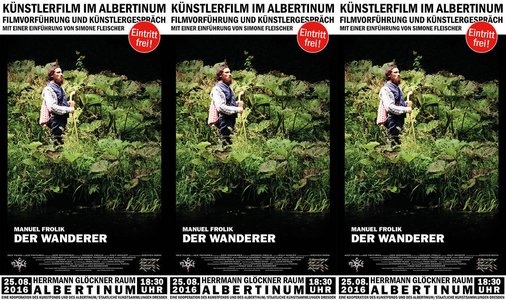
video screening and artist talk
Manuel Frolik “Der Wanderer“ 2014, 37 min, HD, Stereo
With an introduction by Simone Fleischer, director of the Cultural Foundation of the Free State of Saxony.
25 Aug 2016, 6:30 pm, Dresden State Art Collections
Albertinum, Tzschirnerplatz 2, 01067 Dresden
www.facebook.com/events/1053650498046116
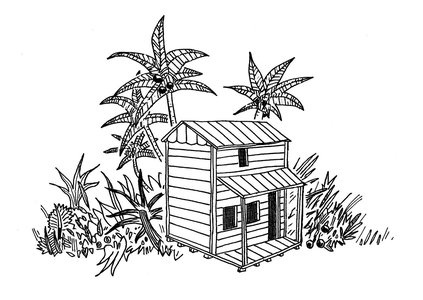
New project space for contemporary art in Leipzig!
Kabakon will present seven shows of contemporary art during summertime of 2016 with the artists Thomas Judisch / Johanna Rüggen / Ullrich Klose / Elisabeth Rosenthal / Marten Schech / Clemens Reinecke / Andreas Grahl / Holmer Feldmann.
Kabakon is kindly supported by Susanne and Michael Liebelt, Hamburg.

READY OR NOT
An exhibition that celebrates 100 years of Dada and ready-made!
07 – 21 July 2016
Christoph David / Judy van Luyk / Mathieu Tremblin / Rozbeh Asmani / Andreas Grahl / Manuel Frolik / Thomas Judisch / Tilman Hornig / Paul Barsch / Ronny Szillo / Lucie Freynhagen / Kay Frommelt / Christian Gebhardt / Lutz Fleischer / Svenja Wichmann / Nora Herrmann / Frank Zitzmann /Andreas Ullrich
C. Rockefeller Center, Rudolf-Leonhard-Str.54, 01097 Dresden
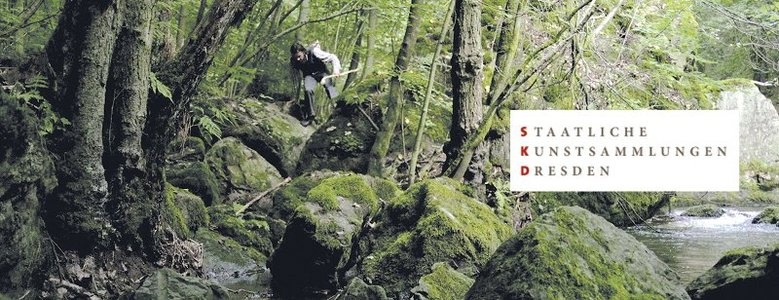
DER WANDERER at the online collection of the Dresden State Art Collections.
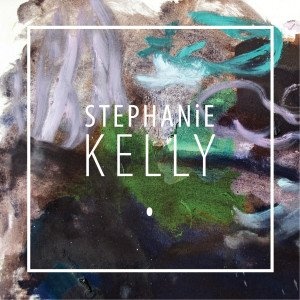
SWAT
Manuel Frolik / Ullrich Klose / Winnie Seifert / Anne Schäfer / Clemens Reinecke
opening: 04 Feb 2016, 6 pm
exhibition: 05 - 20 Feb 2016
Stephanie Kelly, Landhausstrasse 8, 01067 Dresden
www.stephanie-kelly.de

DRESDEN INTERNATIONAL TOPSELLERS
08 – 10 Jan 2016
Dresden art fair, LIVE ART EVENT: Saturday 09.01.2016, 7 pm
Messe Dresden, Messering 6 , 01067 Dresden, Germany
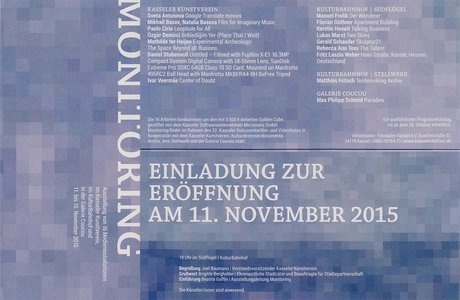
MONITORING
32. Kasseler Dokumentarfilm und Videofest
DER WANDERER as part of an extensive installation at Monitoring Kassel.
opening MONITORING: 11 Nov 2015, 7 pm
Festival: 10 - 15 Nov 2015
KulturBahnhof Südflügel, Rainer-Dierichs-Platz 1, 34117 Kassel
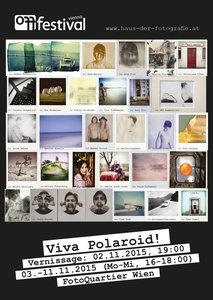
Viva Polaroid!
opening exhibition for the Vienna off-festivals 2015
opening: 02 Nov 2015
festival: 03 - 11 Nov 2015
FotoQuartier Wien, ehem. Schlössl-Kino, Margaretenstraße 127, 1050
Vienna/Austria
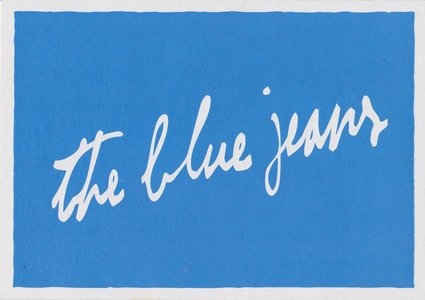
Manuel C. Frolik
THE BLUE JEANS and other brand-new stuff
opening: thu 02 July 2015, 7 pm
exhibition: 03 - 12 July 2015
live-sound-clash mit THE TORQUES at 9 pm
C. Rockefeller Center, Rudolf-Leonhard-Str.54, 01097 Dresden
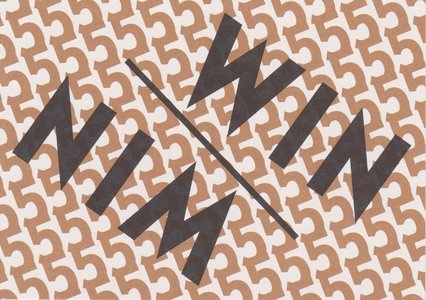
WIN/WIN 5
The purchases of the Cultural Foundation of the Free State of Saxony in 2015.
opening: 12 Juni 2019, 7 pm
exhibition: 13 - 21 June 2015
HALLE 14 - Zentrum für zeitgenössische Kunst
Leipziger Baumwollspinnerei, Spinnereistraße 7, 04179 Leipzig, Germany









